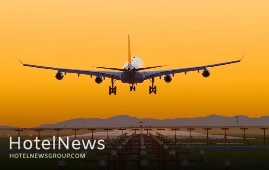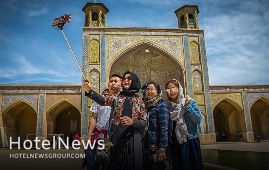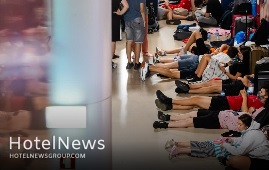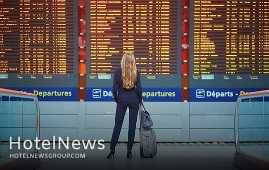
Welcome to our annual World’s Best Luxury Hotel Brands report. This is not just another World’s Best list. LTI – Luxury Travel Intelligence – has taken the past 12 months to apply the perfect assessment process: a rigorously defined algorithm that measures the performance and values of luxury hotel brands. This year, our algorithm has 131 touch points relevant to the luxury hotel sector. Each has its own weighted score value with a total maximum accumulative score of 4736. The touchpoints relate to overall brand performance, rather than the performance of individual properties. It is all about a brand’s ability to deliver: its passion, commitment, ethos and values, as well as the quality of its management and staff. Continuing investment and how well it is executed is also a major factor, particularly regarding new properties and the refurbishment of existing ones. This year’s results are reflected as percentages, with last year’s positions in brackets. 1. Six Senses 83.3% (1) 2. Mandarin Oriental 82.6% (5) 3. Auberge 81.8% (3) 4. Aman 81.4% (2) 5. Belmond 79.9% (4) 6. One&Only 77.0% (6) 7. Oetker Collection 75.7% New Entry 8. Four Seasons 74.1% (8) 9. Rosewood 73.5% (7) 10. Raffles 72.7% New Entry 11. Viceroy 72.2% New Entry 12. COMO 71.0% (10) Other brands that rated sufficiently to be monitored throughout the year are (in alphabetical order) Alila, Anantara, Banyan Tree, Dorchester Collection, Firmdale, Jumeirah, Leela, Oberoi, Park Hyatt, Peninsula, Ritz Carlton, Rocco Forte, Shangri-La, Soho House, St. Regis, Taj, The Luxury Collection. Brands that currently have less than ten properties (our minimum requirement) but rate highly when applying our algorithm are (in alphabetical order) Airelles, Althoff Collection, Bulgari, Capella, Cheval Blanc, Maybourne, Montage, Nikki Beach, Pendry, Soneva. About The World’s Best Luxury Brands ReportNo other organisation connects with the global luxury hotel industry as LTI does. Our researchers engage with everyone from CEOs of the brands we have rated to thousands of managements, staff and guests. This is all part of the process for creating our destination led reports for our members (affluent, discerning travellers) but it also allows us to utilise our findings to create this unique report. Every year the process starts again – the results from previous years have no bearing on the following year. This does inevitably lead to volatility in each year’s results (such as this year), but this is a dynamic sector and we want to reflect what is really happening out there. Six Senses: Worlds Best Luxury Hotel BrandWe continue to be very impressed with Six Senses. It has an authentic blend of wellness, sustainability, warm hospitality and crafted guested experiences. Also, its leadership is exemplary. The recent addition of Neil Palmer as Chief Operations Officer will bring boundless experience, energy and further integrity to the brand. New EntriesWe have been tracking Oetker Collection for several years while they have been building an exceptional portfolio of globally renowned hotels. We have been particularly impressed with the meticulously rebuilt of The Eden Rock in St Barths and their creation of The Woodward, a 26 room all-suite hotel on the shores of Lake Geneva, which opened in September. Raffles, with a new CEO at the helm, has been quietly creating a raft of impressive new properties across the globe. Viceroy has also shown great courage and commitment to building a global modern luxury hotel brand offering intuitive service, authentic experiences and provocative design. Covid-19 Impact Our algorithm has been suitably adjusted to accommodate the multitude of Covid- related challenges that luxury hotel operators have faced during 2020 and 2021. This also accommodates how brands are responding to a significant shift in Covid- driven demands from the luxury traveller.
Create: Oct 19, 2021 Edit: Oct 19, 2021 International News
Qeshm Island recorded over 2.8 million visitors during the first half of the current Iranian calendar year (started March 21). The official data provided by Qeshm’s Department of Ports and Maritime marked a 20 percent increase in tourism flow compared to the same period year on year, IRNA reported. “In the first half of this year, 2,820,229 people traveled to Qeshm, which shows a 20% growth compared to the same period the last year,” Ali Ashtari, who presides over the department, said on Saturday. The island is a heaven for eco-tourists as it embraces wide-ranging attractions such as the Hara marine forests and about 60 villages dotted mostly across its rocky coastlines. It also features geologically eye-catching canyons, hills, caves, and valleys, most of which are protected as part of the UNESCO-tagged Qeshm Island Geopark, itself a haven for nature-lovers. Many travelers to Qeshm believe that the Stars Valley or Valley of Stars is a “MUST SEE”. It is home to bizarre-shaped gorges, tall pillars, canyon-like paths, hollowed-out spaces as well as the smooth and round stones, which have been formed by the wind and rain eroding the soil, rocks, and stones. Locals believe that a star once fell on this area thereby creating the rocky shapes that make it seem as if from another planet.
Create: Oct 19, 2021 Edit: Oct 19, 2021 Regional News
Iranian hotels are ready to receive foreign tourists as the issuance of tourist visas and the flow of foreign tourists from land and air borders will be resumed this month. Ninety percent of the hotel staff have been vaccinated against the coronavirus so far, so the hotels are ready to welcome foreign tourists, observing strict health protocols, the head of the Association of Iranian Hoteliers has announced. To ease the travel process, individual foreign tourists could confirm the reservations of accommodation centers at the border, CHTN quoted Jamshid Hamzehzadeh as saying on Monday. The destinations of foreign tourists in Iran are to specific cities such as Mashhad, Qom, Tabriz, Shiraz, Yazd, and Isfahan, and to return to the figure of over eight million incoming tourists before the outbreak of the coronavirus, serious planning is required, the official added. Iraqi tourists will flood the country once the borders open, but attracting tourists from Europe will require some time, he noted. Foreign advertising in foreign media and press, on the internet, and through well-known international bloggers should also be planned and taken seriously, he mentioned. Earlier this month, the official noted that Iranian hotels have lost 202 trillion rials (some $4.8 billion at the official exchange rate of 42,000 rials per dollar) of potential revenues due to the COVID-19 pandemic. Two-thirds of the hotel staff have lost their jobs as well, he added. Back in September, Hamzehzadeh announced that all employees of accommodation centers across Iran are scheduled to be vaccinated against the coronavirus. “To vaccinate staffs of all accommodation centers, including eco-lodges, apartment hotels, and guest houses, as well as hotels, more coordination with the Ministry of Health is needed,” he added. Back in July, ISNA reported that the tourism industry of the country has suffered a loss of some 320 trillion rials ($7.6 billion at the official exchange rate of 42,000 rials per dollar) since the outbreak of the coronavirus pandemic. The pandemic has also ruined more than 44,000 jobs in a once budding travel sector of the country, the report added. Experts believe accommodation centers suffered the most as a result of the outbreak of the coronavirus in Iran and its subsequent unemployment and financial losses. Iran plans to resume issuing tourist visas Back in September, Cultural Heritage, Tourism and Handicrafts Minister Ezzatollah Zarghami announced that by the order of President Ebrahim Raisi the issuance of tourist visas and the flow of foreign tourists from land and air borders will be resumed from the month of Aban (Oct. 23 – Nov. 21) following 19 months of suspension. Months of steep recession has taken its toll. Many travel insiders, hoteliers, and tour operators have faced big dilemmas such as bankruptcy, unemployment, debts, and the prospects of not being competitive on the international level. They now have good grounds of hope as Zarghami announced on September 19 that the country plans to lift visa restrictions to help the severely hit tourism industry. Meanwhile, the number of people testing positive for COVID-19 has continued to fall in the Islamic Republic, curbing a stubborn fifth wave of the pandemic, which has seen daily mortalities of up to 700 in recent weeks. As of September 22, the figure dropped to below 300 as the government has devoted a great deal of effort to vaccinate citizens against the nasty virus. Some experts believe Iran is still somehow “unknown” for many potential travelers due to Western “media war”. Several estimates have been released so far on the extent of the tourism-related losses incurred by the pandemic. Only months into the outbreak, Zarghami’s predecessor, Ali Asghar Mounesan, lamented that the number of foreign travelers to Iran was drastically plunged due to the pandemic. “Tourism of the country was growing before the corona [outbreak], its revenues reached $11.7 billion in 2019, which accounted for 2.8% of GDP, nearing the average share of tourism in the world GDP, which was 3.2 percent,” Mounesan said. He added 8.7 million foreign nationals visited Iran during the [Iranian] year (1398), adding that Iran was ranked as the second fastest-growing country in tourism based on data compiled by the World Tourism Organization. Iran is potentially a booming destination for travelers seeking cultural attractions, breathtaking sceneries, and numerous UNESCO-registered sites. Under the 2025 Tourism Vision Plan, Iran aims to increase the number of tourist arrivals from 4.8 million in 2014 to 20 million in 2025.
Create: Oct 18, 2021 Edit: Oct 19, 2021 Regional News
Russia is scheduled to lift its COVID-19 ban on flights to Iran and several other countries as of Nov. 9, the government coronavirus task force said on Thursday. Moscow stopped normal commercial flights abroad when the pandemic struck last year, but it has since been gradually relaxing the restrictions, Reuters reported. The restriction will also be eliminated on flights to the Netherlands, Sweden, Norway, Slovenia, Oman, Tunisia, and Thailand. “The flight bans dealt a heavy blow to Russia’s airlines,” Reuters said. Russian tourists eager to visit Iran Many Russian tourists are eager to travel to Iran, an Iranian travel expert said earlier in May, recounting his Russian counterparts. “Many [potential] Russian travelers are motivated to visit novel and lesser-known destinations such as Iran that could be a safe and attractive destination,” said Mostafa Sarvari who presides over the tourism marketing and advertising office of the Iranian Tour Operators Association. “According to Russian tourism experts, the feedback from Russian tourists who have traveled to Iran has been very positive, and its reflection, especially on social media, has caused a great deal of enthusiasm and interest.” In 2017, President Hassan Rouhani and his Russian counterpart Vladimir Putin inked a visa-free agreement for tourist groups.
Create: Oct 16, 2021 Edit: Oct 16, 2021 International News
UNWTO and Netflix have partnered on the publication of a report which looks at the role of film and series as drivers for tourism and cultural affinity. The Global Report on Cultural Affinity and Screen Tourism explores the growing affection one has towards a particular country or culture displayed on the screen. The findings of the research were presented in Madrid against the backdrop of the Iberseries Platino Industria - the largest international event for professionals linked to the audiovisual industry in Spanish and Portuguese. The report’s ultimate goal is to support policymakers and key stakeholders within the tourism sector to implement policies that make their destinations attractive for audio-visual producers. At the same time, it aims to help in the building of focused strategies to promote tourism and consumption of local culture, investing in skills and training to develop the local film and creative sectors to ensure a high level of talent, infrastructure and production capacity and integrating tourism and showcasing culture at film festivals to deepen the global audiences’ knowledge. UNWTO Secretary General Zurab Pololikashvili says: “Both tourism and the audiovisual sectors celebrate and promote culture, support jobs and provide opportunities in diverse locations. The joint work of UNWTO and Netflix will help destinations realize the potential benefits of screen tourism. Dean Garfield, Vice-President, Public Policy, Netflix: “As highlighted in this research, we have been able to demonstrate conclusively what we instinctively already believed, which is that alongside the desire to travel and visit destinations, exposure to screen content also leads to greater interest in heritage, culture, language, and developing interpersonal relationships. This truly demonstrates that the creative industries, cultural exchange, storytelling, and tourism are all interlinked and can transform the way communities perceive and connect with each other.” Following the presentation of the Global Report, experts on tourism and the audio-visual industry shared their knowledge and insights into changing trends in screen tourism, its positive impacts on strengthening cultural affinity and the role of online streaming services in promoting tourism and cultural affinity between people, cultures and countries in line with the 2030 Agenda. The event also served to underline how public-private partnerships can support destinations to promote themselves as attractive locations for audio-visual producers.
Create: Oct 11, 2021 Edit: Oct 11, 2021 International News
Though international tourism has revealed signs of a rebound as some destinations eased travel restrictions over the past couple of months, the lack of international coordination and slow vaccination rates in several countries and regions suggest it may need a longer time to bounce back. On the one hand, according to the latest edition of the UNWTO World Tourism Barometer, an estimated 54 million tourists crossed international borders in July 2021, down 67% from the same month in 2019, but the strongest results since April 2020. This compares to an estimated 34 million international arrivals recorded in July 2020, though well below the 164 million figure recorded in 2019. On the other hand, another research conducted by Oxford Economics on behalf of the World Travel and Tourism Council (WTTC) reveals that countries’ GDP is expected to increase only by less than one-third, as tourism is recovering even slower than expected. The research was based on the current vaccination rates globally, consumer confidence, and less stringent entry and travel restrictions in the world. However, prospects for September-December 2021 remain mixed, according to the latest UNWTO Panel of Experts survey, with 53% of respondents believing the period will be worse than expected. Only 31% of experts expect the point to better results towards the end of the year. The survey also shows that most tourism professionals continue to expect a rebound driven by unleashed pent-up demand for international travel in 2022, mostly during the second and third quarters. Almost half of all experts (45%) continue to see international tourism returning to 2019 levels in 2024 or later, while 43% point to a recovery in 2023. By regions, the largest share of experts pointing to a return to 2019 levels in 2024 or later are in Asia and the Pacific (58%). In Europe, half of the respondents indicate this could happen in 2023. West Asia is the most optimistic, with a full recovery expected by 2022. The sector needs leaders who can recognize ideas that will make a difference, who will innovate and back entrepreneurs and start-ups. As mentioned by the UNWTO Barometer, most destinations reporting data for June and July 2021 saw a moderate rebound in international arrivals compared to 2020. Nevertheless, 2021 continues to be a challenging year for global tourism, with international arrivals down 80% in January-July compared to 2019. Asia and the Pacific continued to suffer the weakest results in the period January to July, with a 95% drop in international arrivals compared to 2019. West Asia (-82%) recorded the second-largest decline, followed by Europe and Africa (both -77%). The Americas (-68%) saw a comparatively smaller decrease, with the Caribbean showing the best performance among world subregions. Meanwhile, some small islands in the Caribbean, Africa, and Asia and the Pacific, together with a few small European destinations recorded the best performance in June and July, with arrivals close to, or sometimes exceeding pre-pandemic levels.” Iran preparing for tourism rebound Iran considers reopening borders to foreign vacationers as its new tourism minister has said the government will soon scrap visa restrictions. Cultural Heritage, Tourism and Handicrafts Minister Ezzatollah Zarghami made the announcement last month following his conversations with President Seyyed Ebrahim Raisi, however, the minister did not specify the date upon which those regulations would be scrapped. According to some sources, fully vaccinated travelers would be embraced first under the updated regulations. The average of international travels to and from the Islamic Republic fell by 80 percent during the past Iranian calendar year 1399 (ended on March 20, 2021) from a year earlier. “During this period, 4,343,163 passengers entered the country, which included 3,030,464 Iranian passengers and 512,699 international travelers,” according to Arezou Ghaniun, an official with the Islamic Republic of Iran's Customs Administration. “From the beginning of 1399 to the end of it, we saw a significant reduction in passenger traffic to the country or vice versa in land, sea, rail and air borders, which were caused by various coronavirus restrictions.” Months of steep recession has taken its toll. Many travel insiders, hoteliers, and tour operators have faced big dilemmas such as bankruptcy, unemployment, debts, and the prospects of not being competitive on the international level. Panels of travel experts have mapped out new marketing strategies hoping Iran’s tourism would get back on its feet once again. For instance, the Head of the Iranian Tour Operators Association has said the international tourist flow to Iran will return to normal until 2022. Iran is potentially a booming destination for travelers seeking cultural attractions, breathtaking sceneries, and numerous UNESCO-registered sites. Under the 2025 Tourism Vision Plan, Iran aims to increase the number of tourist arrivals from 4.8 million in 2014 to 20 million in 2025. Domestic tourism as a propeller in COVID era The annual UNWTO Executive Training Programme, which was held in the Maldives from October 5 to 8, sharpened the focus on harnessing the power of domestic tourism to drive recovery and growth in destinations across Asia and the Pacific. Now in its 15th year, the event brought together representatives of 25 countries, with six (Iran, Sri Lanka, Afghanistan, Bangladesh, Mongolia, and Nepal) joining hosts in the Maldives to attend the training sessions in person. Reflecting the restart of domestic tourism ahead of international tourism, both across Asia and the Pacific and globally, the event focused on enabling destinations of all sizes to capitalize on this trend. Opening the event, UNWTO Secretary-General Zurab Pololikashvili stressed that, as tourism restarts in many parts of the world, “the sector needs leaders who can recognize ideas that will make a difference, who will innovate and back entrepreneurs and start-ups”. Confidence in travel rising sluggishly Such an enhancement was underpinned by the reopening of many destinations to international travel, mostly in Europe and the Americas. The relaxation of travel restrictions for vaccinated travelers, coupled with the progress made in the roll-out of COVID-19 vaccines, contributed to lifting consumer confidence and gradually restoring safe mobility in Europe and other parts of the world. In contrast, most destinations in Asia remain closed to non-essential travel. According to UNWTO Secretary-General Zurab Pololikashvili, there is a strong demand for international tourism, and many destinations have started welcoming visitors back safely and responsibly. However, the true restart of tourism and the benefits it brings remains on hold as inconsistent rules and regulations and uneven vaccination rates continue to affect confidence in travel,” Pololikashvili says.
Create: Oct 10, 2021 Edit: Oct 10, 2021 Regional News
Two hundred flights were cancelled at Lisbon airport on Saturday at the start of a two-day strike by Groundforce handling company workers, with more cancellations likely before the action ends on Sunday evening, the company that manages Portugal’s airports (ANA) said. A spokesman for the Union of Airport Handling Technicians, which called the strike, told local news agency Lusa that about 100 per cent of workers had taken part in the strike in Lisbon on Saturday, the busiest airport in the country. The strike has had a huge impact on Portuguese flag carrier TAP, which uses Groundforce’s handling services, but it has not affected low-cost airlines. Groundforce workers are demanding that the handling company, which is in serious financial difficulties due to the coronavirus pandemic, pay wages without any delay, along with this year’s holiday pay. The strike mainly affects the operation of Lisbon airport, and has little impact on the other nine Portuguese airports, ANA chief executive Thierry Ligonnière said. “We still anticipate difficulties tomorrow and a progressive return to normal on Monday,” Mr Ligonnière told reporters. Groundforce is 50.1 per cent owned by the Portuguese firm Pasogal and 49.9 per cent by the TAP-Air Portugal group, which in turn is 72.5 per cent controlled by the Portuguese state. TAP offered to lend the money necessary for Groundforce to pay the holiday pay to its workers, but the proposal was turned down by the handling company.
Create: Jul 18, 2021 Edit: Jul 18, 2021 International News
The restart of international travel could be seriously delayed without worldwide reciprocal recognition of all approved COVID-19 vaccines, says the World Travel & Tourism Council (WTTC).The global tourism body, which represents the global private Travel & Tourism sector, has issued its warning following concerns tourists face being turned away at the borders because countries don’t have a common list internationally recognised and approved COVID-19 vaccines.This comes just days after a number of British holidaymakers, who had been administered the Indian Covishield batch of the Oxford/AstraZeneca vaccine, were rejected entry into Malta despite the drug being chemically identical to the UK-made vaccine.Over the past few weeks reports of holidaymakers facing obstacles to entry have been on the rise, with some even being prevented from boarding their flights to destinations.WTTC believes that once again, the lack of international coordination to agree on a list of approved vaccines, is creating yet another major stumbling block for the restart of international travel.This comes despite most vaccines have secured the approval of the World Health Organisation (WHO) or Stringent Regulatory Authorities (SRAs), such as the UK’s the Medicines and Healthcare products Regulatory Agency (MHRA) and the Food and Drug Administration in the US, and the European Medicines Agency (EMA).Reports of travellers being turned away because they have the ‘wrong’ vaccine batches or ‘unrecognised’ vaccines have fueled concern from consumers, deterring them from booking and thereby damaging the already struggling Travel & Tourism sector.The plea for reciprocal recognition for all vaccines and vaccine batches forms part of WTTC’s four new guidelines which are aimed at safely resuming international mobility and save the millions of jobs and livelihoods which depend on this sector, while kick-starting the global economic recovery.Virginia Messina, Senior Vice President WTTC, said: “Reciprocal recognition of all vaccine types and batches is essential if we are to avoid any further unnecessary and damaging delay to restarting international travel.“The failure of countries to agree on a common list of all approved and recognised vaccines is of huge concern to WTTC, as we know every day travel is curbed, more cash-strapped Travel & Tourism businesses face even greater strain, pushing ever more to the brink of bankruptcy.“We can avoid this by having a fully recognised list of all the approved vaccines – and vaccine batches – which should be the key to unlocking international travel, not the door to preventing it.“It will also give holidaymakers and travellers the confidence they need to book trips, flights and cruises, confident in the knowledge that their fully-vaccinated status will be internationally recognised.”WTTC says the restoration of safe international travel can be achieved by following its four guidelines.Through a combination of COVID-19 testing, vaccination, digital health travel passes and the use of health and safety protocols, such as wearing face masks, safe international mobility can resume while at the same time saving millions of jobs and livelihoods which depend on the sector and kick-starting the global economic recovery. WTTC’s fundamental guidelines to restore international mobility while safeguarding public health include: Appropriately reduced protocols for vaccinated travellers, including no need for testing or quarantine for those fully vaccinated. Global recognition for international travel of all vaccines authorised for use and deemed safe and effective by the WHO or by the WHO recognised SRAs.A data driven, risk-based and internationally harmonised approach to re-establishing freedom of movement, that is consistent across countries, easy to communicate and clearly understood by travellers.Global adoption of ‘digital health passes’ which enable travellers to easily obtain and verify their vaccination status, negative COVID test result or natural immunity from a previous infection. These must work with existing border control and travel operator systems accepted by all countries. Digital verification of a traveller’s COVID status prior to travel will avoid lengthy and unsafe queues in transport hubs and terminals.Continued implementation of high-quality health and safety standards throughout all areas of the Travel & Tourism sector, including continued adoption of the WTTC’s Safe Travel Protocols and Safe Travel Stamp, with the continued wearing of face masks in crowded and enclosed areas as well as on all forms of public transport. WTTC advocates the full implementation of these proportionate and responsible guidelines for travel during over the next few months, as many travel restrictions begin being eased as major travel markets begin to reopen.This is against the backdrop of a successful vaccination roll out, with a subsequent decrease in deaths, cases, and hospitalisations in many countries. However, variants will continue to be cause of concern as the world struggles to emerge from the effects of the pandemic.
Create: Jul 17, 2021 Edit: Jul 17, 2021 International News
Iranian tourism minister Ali-Asghar Mounesan on Tuesday inaugurated a palace museum complex during his visit to Sanandaj, the capital of Kordestan province. Several other provincial and local officials, travel insiders, and cultural heritage experts attended the opening ceremony of Khosro-Abad Palace Museum, which is named after a centuries-old mansion located within the historical complex, CHTN reported. The palace complex has its roots in ancient Persia; however, it was more prosperous during the Qajar era (1789 to 1925). Kordestan also spelled Kurdistan, is bounded by the Iranian region of Azarbaijan on the north, and it borders Iraq on the west. The name Kordestan means “Country of the Kurds,” referring to the region’s principal inhabitants. After the Turkish invasion of Iran in the 11th century CE (Seljuk period), the name Kordestan was applied to the region comprising the northwestern Zagros Mountains. It was during the reign of the Safavid monarch, Shah Abbas the Great, that the Kurds rose to prominence, having been enlisted by Abbas I to help stem the attacks of the marauding Uzbeks from the east in the early 17th century.
Create: Jul 7, 2021 Edit: Jul 7, 2021 Regional News
China’s state-owned Academy of Launch Vehicle Technology (CALT) has announced some ambitious plans to establish a permanent crewed base on the surface of Mars. In a speech at the Global Space Exploration Conference (GLEX 2021), CALT head Wang Xiaojun elaborated on the country’s three-step approach for future missions to the Red Planet, state-owned newspaper Global Times reports. The announcement sends a strong signal that China is just as interested in developing a human presence on the Red Planet within the next 20 or so years as NASA and SpaceX — or, at least, that it sees propaganda value in planning out such missions. Three Steps to Mars China is hoping to start with a Mars sample return mission in the early- to mid-2030s, as well as a mission to find the best spot for a future base. Next is a crewed mission, which will involve laying the foundations for the Mars base. In the early 2040s, the country is hoping to establish a “large scale Earth-Mars cargo fleet” for “large scale development of the Red Planet,” according to Global Times. Sky Ladder China is hoping to use nuclear power to allow the first crews to travel to Mars, according to Wang. The scientist even mentioned a “Sky Ladder,” essentially a type of space elevator, that could carry cargo and crews to the Moon using just four percent of the cost. This would involve a capsule traveling along a carbon nanotube to a space station before relaunching towards the Moon. These ideas may sound mostly like science fiction at this point. But if China’s recent track record is anything to go by — the country has managed to send rovers to both the Moon and Mars as well as establishing a space station in orbit over the course of just several years — it may just have a shot at realizing its Mars exploration goals as well.
Create: Jun 28, 2021 Edit: Jun 28, 2021 International News
The first-ever agritourism permit in Minudasht county has been issued for a vast farm, which is located in the lush green Golestan province in northern Iran, Minudasht tourism director announced on Sunday. Such permits are granted to eligible farm owners in the country to launch agritourism businesses, aiming to set certain standards in a move to ensure the quality of their services. Setting up in an area of 40 hectares, the farm is expected to create jobs for 100 people,” Reza Pourmehdi said, CHTN reported. The farm includes a greenhouse, gardens of blueberry, olive, pears, peaches, cherries, nectarines, pomegranates, and it has sections for wheat cultivation, and animal breeding, fish farming, and beekeeping, the official explained. Agritourism is a relatively new branch of the travel industry in which tourists stay with local people in rural areas. Farm/ranch recreation refers to activities conducted on private agricultural lands, which might include fee-hunting and fishing, overnight stays, educational activities, etc. Experts believe that in addition to the customer services jobs, agritourism pays special attention to the production sector, saying agricultural tourism is much more important and practical than other branches of tourism because it creates a new chain and diversity in the field of production and services. Agritourism and nature-tourism enterprises might include outdoor recreation (fishing, hunting, wildlife study, horseback riding), educational experiences (cannery tours, cooking classes, or tea or coffee tasting), entertainment (harvest festivals or barn dances), hospitality services (farm stays, guided tours, or outfitter services), and on-farm direct sales (u-pick operations or roadside stands). Agritourism is a subset of a larger industry called rural tourism that includes resorts, off-site farmers' markets, non-profit agricultural tours, and other leisure and hospitality businesses that attract visitors to the countryside.
Create: Jun 21, 2021 Edit: Jun 21, 2021 Regional News
Hospitality, at its core, is an industry of people taking care of people, and has a long-standing commitment to cleanliness and service standards. While the housekeeping team is central in the delivery of those standards, it operates in the background, out of view. Room attendants and supervisors moved around discreetly to be as invisible as possible. However, COVID-19 has thrust housekeeping into the limelight. As COVID has led to a surge in public health awareness, hotels are now put in a position of making their commitment to cleanliness part of their guest experience. Rethinking operations, and re-designing housekeeping operations using technology is the only way to achieve the productivity and quality that is required. At Knowcross, we focus on three central housekeeping areas: staff productivity, cleaning quality, and guest experience. We have moved swiftly to enhance our products to adapt to the negative impact COVID-19 has had on each of these areas. The unpredictability of the virus means that your hotel must be vigilant in its adherence to new health and safety protocols. Your housekeeping technology has a critical role here and it serves several purposes. First, it underlines that health and safety should always be top of mind every day and that your hotel fosters a culture of accountability. Secondly, health checks and associated reporting help support contact tracing in the event there is a positive test amongst the team. Quicker containment means that the hotel itself can be protected from shutdown and, most importantly, your staff stays safe. Lastly, health checks communicate to your staff that you are looking out for one another. New Cleaning Protocols Hospitality industry was quick to roll out an extensive list of cleaning and safety protocols after COVID-19 erupted. Housekeeping operations must support changes such as the elimination of high-touch items in guest rooms, dedicated ‘cleanliness’ teams and the intensive sanitisation of common areas and guest rooms. All of these changes impact staffing assignments and cleaning times, which have a direct impact on guest experience. The truth is that most hotels, unfortunately, have had to let staff go, resulting in more work for the remaining people. Your housekeeping software must include the configurability to support these variations without adding manual management time. For example, when creating housekeeping tasks, you may now need to a “sanitation > full cleaning > inspection > sanitize & seal” cycle to prepare a departure room for a new arrival. Your system should support this new task structure while also accounting for the time and labor requirements. At Knowcross, we’ve done this with a fully automated system called Dynamic Task Sheets that eliminate the need for a central coordinator in housekeeping to constant- ly create task sheets and juggle staff and rooms among them. In some geographic areas, we have witnessed rules pertaining to a limited percent- age of rooms in active rotation, with accompanying cleaning cycles. Once again, your housekeeping operations software should make the rotation and sanitation of room blocks simple, with few manual adjustments. Conclusion New housekeeping technology enhancements have kept up with changing COVID-19 requirements, but it must be remembered that those hotels with housekeeping management automation solutions were already enjoying the labor efficiencies that are now so sought after across the industry. Whether it’s using PMS data to map cleaning schedules, instantly communicating room status, or providing mobile at-a-glance guest histories, technology can improve productivity and accuracy of housekeeping departments – a must-have in the post COVID world. I have no doubt that intelligent, data-driven housekeeping operations will soon become the norm and hotels will find new, innovative ways to deliver superior guest experiences that today’s travelers yearn for more than ever.
Create: Jun 20, 2021 Edit: Jun 20, 2021 Housekeeping
